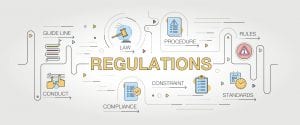So there I was coffee in hand ready to take on the day like every other day that week. As I walk into the office I am immediately struck (like a brick to the face) with the sounds of chaos and I suddenly realize, this is not going to be your ordinary day. The phones were ringing off the hook. We had 20 calls in queue and customers waiting for 5 minutes to talk with a representative. Supervisors are driving short calls and there is a quick training going on in some back room with a group of newbies shaking in their booties in an effort to get all calls covered. All the while management is watching the ASA quickly increase, service levels are shot, and I don’t even want to discuss the abandon rates. On a positive note, occupancy rates are great!
Here, we go! Man the battle stations, baton down the hatches, and for the love of everything holy let’s get ahead of this volume. Does this sound familiar to anyone?
Anyone working in inbound telemarketing services or using outsourced telemarketing knows these situations and knows it takes careful planning and a lot of hard work to make sure this is the anomaly and not the common occurrence. So how do you get around it? My answer to you is metrics. Study them; look at your history and then plan based off your historical data. Focusing on metrics is crucial to the success of any Inbound Telemarketing Firm, however many companies struggle with what metrics are the most essential to focus on. Let’s take a quick moment to discuss some of those key metrics to watch and how they really make a difference.
Inbound Telemarketing Services Metrics that Matter Most
- Service Level/Occupancy Rates – By definition Service Level is the percent of calls answered in a certain time frame goal deemed appropriate by your organizations. Most use 80% of calls answered in 20 seconds or less. While this is definitely the most popular guideline it doesn’t mean it is the right one. Because Service Level goals can drive so many other behavioral habits and goals in your business it’s crucial to look at many different aspects when deciding what is right for your organization. Hitting or not hitting your Service Levels can tell you a lot about your staffing and whether you need to ramp up or ramp down. While Service Levels should be watched over the day I would encourage you to dive into the details and watch this metric during specific time intervals. Just because you hit Service Levels for the day doesn’t mean there are not opportunities to better your staffing during certain times of the day. If you are hitting your Services Levels with ease you may need to take a look at your occupancy rates because you could have agents sitting long between calls causing your company extra money you don’t need to spend.
- ASA (Average Speed of Answer) – ASA is the average amount of time it takes for calls to be answered during a specific time frame. For many Inbound Telemarketing Services organizations this is a steeple. While it is definitely a key metric to watch, I will caution you that this number can become skewed and doesn’t always paint a clear picture of how quickly or if all your customer calls are being answered. Remember, it is an average over a given time frame and doesn’t include calls that abandon. Knowing if you had 5 calls holding for 15 minutes throughout the day is valuable information and one that can help you close gaps quickly. Look at this number closely, look at it throughout segments of the day and make adjustments as needed.
- Average Speed to Abandon – This is the average length of time customers held in queue before they call it quits. What I love about this number is how it can help you determine proper Service Level Goals. Think about it for a second. If my goal is 80/20 and my average time to abandon is 2 minutes, why do I need to answer all my calls in 20 seconds? Now, I’m not saying to push your goals to 2 minutes but maybe a more realistic goal is 80% in fewer than 45 seconds. Different customer types will abandon sooner than others and because of that you need to understand your Average Speed to Abandon in order to set proper Service Level Goals.
- Average Handle Time – AHT is the total average duration of calls, including hold time, talk time and wrap time divided by the total number of calls handled. This metric is great for giving you a quick view of how quickly you are working your way through the calls. This is especially nice in the event that your agents are taking calls that are fairly standard in nature with not much deviance from call to call. Where the metric becomes less important to me is in the event where your callers will handle various calls with varying levels of complexity. Because the agent might need to spend longer times with some customers and shorter times with others, this goal becomes harder to quantify. If you start gauging agents by these numbers in a complex call situation you could end up with unhappy agents and unhappy customers. My course of action would be to watch this number but don’t live and die by it.
While the list of metrics that can be analyzed goes on and on, I have found over the course of the years that studying the historical numbers behind these select few will provide you with a wide variety of advantages. So, dive in, make adjustments, and drink your coffee with confidence knowing you can avoid those crazy days.








